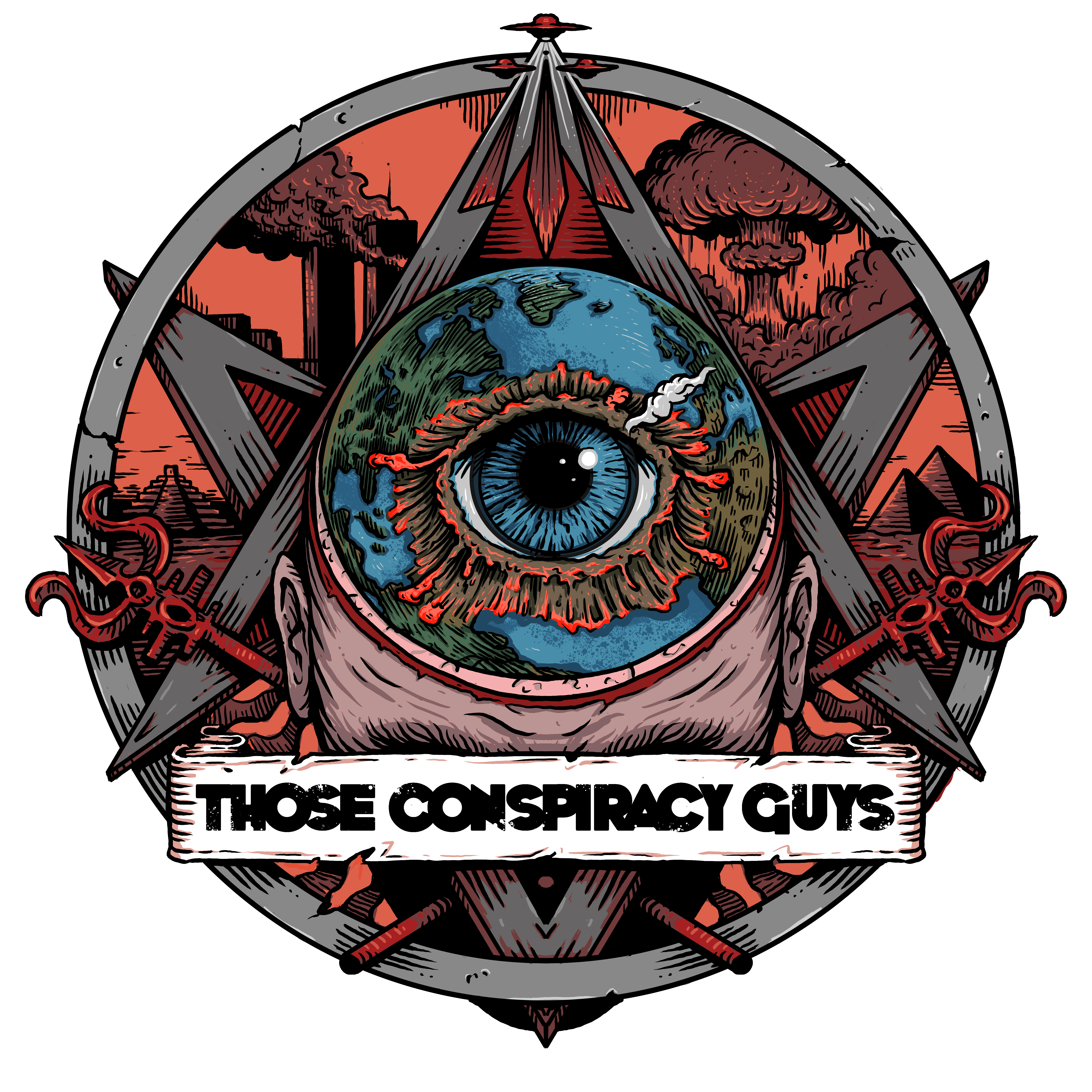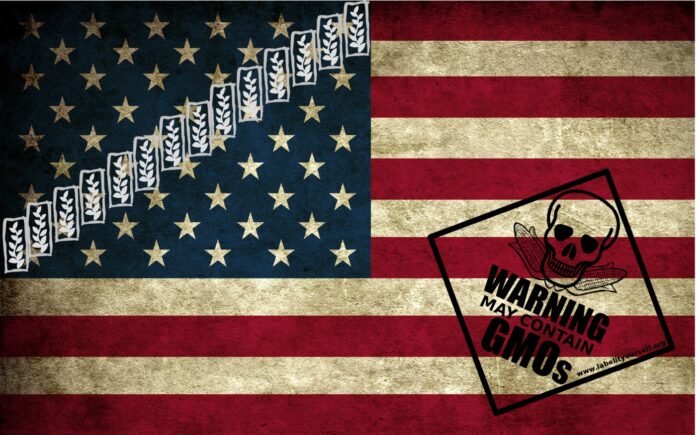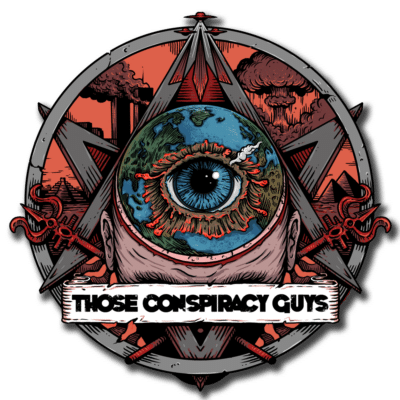As we mentioned in our Monsanto episode, the scope of the biotech behemoth’s influence doesn’t stop at the purse strings of the farmers that they intimidate. Nor does it end with the public who are sometimes unwittingly ingesting their genetically modified products and weedkillers. It doesn’t even end with the war chest available to them for dodgy but ostensibly legal activities like lobbying, costly lawsuits and ousting/absorbing any competition that might sprout up in their field. Their reach extends all the way to some of the highest political offices in the United States, in what appears to us to be an obvious conflict of interest in many cases. Here’s a quick rundown of a few of the well-positioned players in Monsanto politics – at least, the ones that are on the books.
Monsanto Politics – The Players
Michael Taylor – The Chameleon
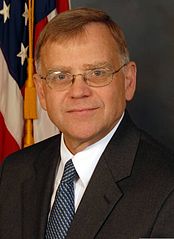 We’ll start with what seems to be one of the most colorful resumes on the list. Michael Taylor jumps back and forth between both sides of the fence over a period of decades, to the point where it’s hard to tell where the line is, if it ever existed. From 1976 to 1981, he worked as executive assistant to the Commissioner for the Food & Drug Administration (FDA). After that he worked at a private firm that represented Monsanto until 1991, becoming the head guy for the firm’s food & drug law practice. From 1991 to 1994 he was back in the FDA, and then spent the two subsequent years in the US Department of Agriculture (USDA). Having been influential in many pivotal changes to food and drug policies during those years, it seems Monsanto owed Taylor a nice reward, so from 1996 to 2000 he held the position of Vice President of Public Policy for the company. For the next nine years, he occupied multiple positions: Director and Senior Fellow of the Center for Risk Management, part of the think tank Resources for the Future; Director of Resolve, a non-profit environmental and public health mediation and dispute resolution organization; and adjunct professor of law at Georgetown University Law Center. In 2009, probably having built up enough positive karma, he returned to government work as Senior Advisor for the FDA Commissioner. One year later, they just said “fuck it” and created an entirely new position for him as Deputy Commissioner for Foods, or the “Food Safety Czar” as it’s affectionately known. Because nothing says safety and objectivity in America like the word for the emperor of their rival superpower.
We’ll start with what seems to be one of the most colorful resumes on the list. Michael Taylor jumps back and forth between both sides of the fence over a period of decades, to the point where it’s hard to tell where the line is, if it ever existed. From 1976 to 1981, he worked as executive assistant to the Commissioner for the Food & Drug Administration (FDA). After that he worked at a private firm that represented Monsanto until 1991, becoming the head guy for the firm’s food & drug law practice. From 1991 to 1994 he was back in the FDA, and then spent the two subsequent years in the US Department of Agriculture (USDA). Having been influential in many pivotal changes to food and drug policies during those years, it seems Monsanto owed Taylor a nice reward, so from 1996 to 2000 he held the position of Vice President of Public Policy for the company. For the next nine years, he occupied multiple positions: Director and Senior Fellow of the Center for Risk Management, part of the think tank Resources for the Future; Director of Resolve, a non-profit environmental and public health mediation and dispute resolution organization; and adjunct professor of law at Georgetown University Law Center. In 2009, probably having built up enough positive karma, he returned to government work as Senior Advisor for the FDA Commissioner. One year later, they just said “fuck it” and created an entirely new position for him as Deputy Commissioner for Foods, or the “Food Safety Czar” as it’s affectionately known. Because nothing says safety and objectivity in America like the word for the emperor of their rival superpower.
Clarence Thomas – The Lawman
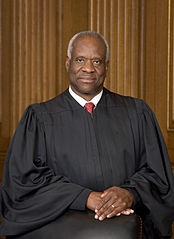 Clarence Thomas has had a busy career. Starting off straight out of the bar as Assistant Attorney General of Missouri in 1974, he was the first black person in the Attorney General’s staff. He would go on later to fight many legal battles through the Office for Civil Rights and the Equal Employment Opportunity Commission, among others, but for a little over two years he held the only private job of his legal career – attorney for the Monsanto Chemical Company in St. Louis. Why would this man – once described as “openly ambitious for higher office,” a man who spent less than two years as a Federal Judge before being appointed to the Supreme Court where he remains to this day – take the job at Monsanto during the uphill portion of his vocation, effectively delaying his progress? Was there a reciprocal agreement there with the higher-ups, fulfilling his ambitions if he promised to remain a loyal friend to Monsanto once he reached the highest legal bench in the land?
Clarence Thomas has had a busy career. Starting off straight out of the bar as Assistant Attorney General of Missouri in 1974, he was the first black person in the Attorney General’s staff. He would go on later to fight many legal battles through the Office for Civil Rights and the Equal Employment Opportunity Commission, among others, but for a little over two years he held the only private job of his legal career – attorney for the Monsanto Chemical Company in St. Louis. Why would this man – once described as “openly ambitious for higher office,” a man who spent less than two years as a Federal Judge before being appointed to the Supreme Court where he remains to this day – take the job at Monsanto during the uphill portion of his vocation, effectively delaying his progress? Was there a reciprocal agreement there with the higher-ups, fulfilling his ambitions if he promised to remain a loyal friend to Monsanto once he reached the highest legal bench in the land?
Roger Beachy – The Director
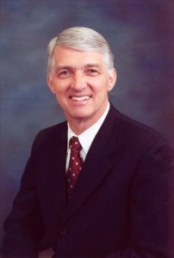 Roger N. Beachy seems like a shining light in the line-up of biologists that are currently involved with the United States government. Having studied and worked hard to achieve his BA and PhD in biology and plant pathology respectively, he went on to become Professor and Director of the Center for Plant Science & Biotechnology at Washington University in St. Louis – home to the Monsanto corporation, in case you forgot – then went on to lead the Division of Plant Biology at The Scripps Research Institute in California, one of the largest private biomedical researchers on the planet. Then, from 1999 to 2009, his title was President of the Donald Danforth Plant Science Center back in good old St. Louis, an organization that received millions in funding and 40 acres from Monsanto. Beachy also helped, with his research and in collaboration with Monsanto, to pioneer the first genetically modified food crop, a virus-resistant strain of tomato. Seems like a swell guy, right? That’s probably why Barack Obama appointed him as the first Director of the National Institute of Food and Agriculture (NIFA). NIFA’s mission is to “stimulate and fund the research and technological innovations that will enhance American agriculture and make it more productive and environmentally sustainable while ensuring the economic viability of agriculture and production,” and was developed as part of a task force spear-headed by William H. Danforth, of Donald Danforth Plant Science Center fame. The organization is subordinate to the USDA, whose director Tom Vilsack is a GMO-loving, glyphosate-rubber-stamping kind of fellow. There’s absolutely no way that any funny business regarding oversight and approval could be going on with that bunch behind you, right?
Roger N. Beachy seems like a shining light in the line-up of biologists that are currently involved with the United States government. Having studied and worked hard to achieve his BA and PhD in biology and plant pathology respectively, he went on to become Professor and Director of the Center for Plant Science & Biotechnology at Washington University in St. Louis – home to the Monsanto corporation, in case you forgot – then went on to lead the Division of Plant Biology at The Scripps Research Institute in California, one of the largest private biomedical researchers on the planet. Then, from 1999 to 2009, his title was President of the Donald Danforth Plant Science Center back in good old St. Louis, an organization that received millions in funding and 40 acres from Monsanto. Beachy also helped, with his research and in collaboration with Monsanto, to pioneer the first genetically modified food crop, a virus-resistant strain of tomato. Seems like a swell guy, right? That’s probably why Barack Obama appointed him as the first Director of the National Institute of Food and Agriculture (NIFA). NIFA’s mission is to “stimulate and fund the research and technological innovations that will enhance American agriculture and make it more productive and environmentally sustainable while ensuring the economic viability of agriculture and production,” and was developed as part of a task force spear-headed by William H. Danforth, of Donald Danforth Plant Science Center fame. The organization is subordinate to the USDA, whose director Tom Vilsack is a GMO-loving, glyphosate-rubber-stamping kind of fellow. There’s absolutely no way that any funny business regarding oversight and approval could be going on with that bunch behind you, right?
Linda Strachan – The Insider
 Linda Strachan knows how to weave the two sides of government and business effortlessly, having worked for many years on either side of the fence – a fence which may or may not contain wood grown using genetically modified seeds. Having clocked up over six years between the House of Representatives and the Senate as a Staff Assistant, she moved onto the role of Special Assistant to the Assistant Administrator for Pesticides and Toxins, part of the EPA. After five years of that, and another eight years spent as another Special Assistant to the Assistant Secretary of the Bureau of Oceans and International Environmental & Scientific Affairs – a fairly broad purview in anyone’s estimation – Strachan must have gotten sick of assisting the assistants. In 1998, she hopped over to the private sector, taking all of her government experience and parlaying it into the role of Director of Government Affairs for Monsanto. However, there must have been a little clean-up left to do in the public sector before Strachan could move on: she racked up almost another three years as Assistant Secretary at the USDA before claiming an almost identical role as the one she had at Monsanto, this time at that other great chemical titan, DuPont, in 2009 where she remains to this day. Was there a chance of biased tomfoolery taking place at any time during those three years, or did Strachan stay pure? Did she have any undue influence in meetings that took place between either Monsanto or DuPont and the government – influence earned over more than 20 years in high-ranking positions – while operating as Director of Government Affairs?
Linda Strachan knows how to weave the two sides of government and business effortlessly, having worked for many years on either side of the fence – a fence which may or may not contain wood grown using genetically modified seeds. Having clocked up over six years between the House of Representatives and the Senate as a Staff Assistant, she moved onto the role of Special Assistant to the Assistant Administrator for Pesticides and Toxins, part of the EPA. After five years of that, and another eight years spent as another Special Assistant to the Assistant Secretary of the Bureau of Oceans and International Environmental & Scientific Affairs – a fairly broad purview in anyone’s estimation – Strachan must have gotten sick of assisting the assistants. In 1998, she hopped over to the private sector, taking all of her government experience and parlaying it into the role of Director of Government Affairs for Monsanto. However, there must have been a little clean-up left to do in the public sector before Strachan could move on: she racked up almost another three years as Assistant Secretary at the USDA before claiming an almost identical role as the one she had at Monsanto, this time at that other great chemical titan, DuPont, in 2009 where she remains to this day. Was there a chance of biased tomfoolery taking place at any time during those three years, or did Strachan stay pure? Did she have any undue influence in meetings that took place between either Monsanto or DuPont and the government – influence earned over more than 20 years in high-ranking positions – while operating as Director of Government Affairs?
Does Monsanto Politics Mean Anything?
Look, we might not be Woodward and the Berenstein Bears, and all of the above information is freely available to anyone with an internet connection. In fact, it’s a chopped down version, and is only focusing on a few people, when there are bound to be many more. Undoubtedly any conclusions that are being drawn here are speculative without actually being in the room with the people making the decisions, but one has to admit: the policy of being able to hop back and forth between regulatory bodies, oversight positions, and positions in a company or companies that have major controversy surrounding their business practices and their effects on human health is suspect to an inquisitive or analytic mind, to say the least. All we can ask, as always, is just for you to pay attention and check your sources, with a new caveat: always read the work history lobbying history voting history label.
